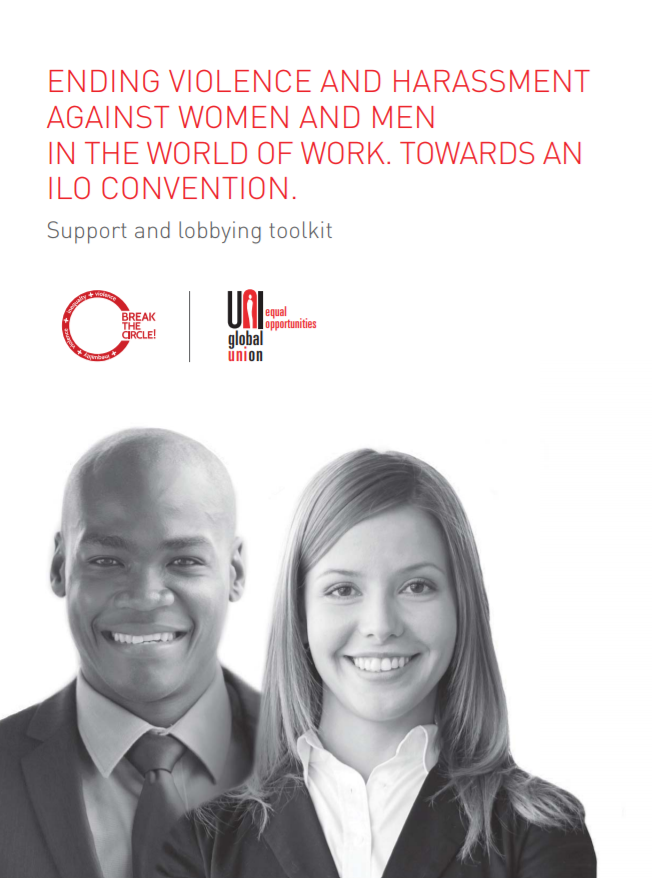
This toolkit is for all UNI affiliated unions who are engaged in lobbying efforts with their Governments and employers to achieve an ILO convention against violence against women and men at the workplace.
For the original source, please click here.

This toolkit is for all UNI affiliated unions who are engaged in lobbying efforts with their Governments and employers to achieve an ILO convention against violence against women and men at the workplace.
For the original source, please click here.

CNV International and the Netherlands Enterprise Agency present a new publication Violence @ work, a guide to prevent violence in the workplace.
The factsheet aims to support preventing and eliminating violence. It informs about characteristics of violence in the workplace, as well as its causes and effects. The guide provides tips to tackle and discourage violence at work in effective ways.
By sharing workplace initiatives of small and medium-sized enterprises (SMEs), brands, unions and other key players, this guide explains how companies can contribute to the elimination of violence at work in their international supply chain. It helps SME’s to take steps to create a positive working environment where violence will not be tolerated.
For the original source, please click here.


Violence against women at the workplace is a major problem, though the statistical evidence is not well developed for many countries. This report aims at gaining a better insight into the extent to which working women are facing violence at work. The research focussed on the extent and characteristics of violence against women at the workplace and on the perpetrators of violence, notably bosses, co-workers or clients/patients/customers/pupils and similar. It focusses on women in the working age population (15-65 years of age), hence adolescent and adult women.
Our research focussed on sexual harassment and bullying at the workplace. It did neither cover domestic violence against women nor human trafficking and forced prostitution, because the causes and consequences of these phenomena are different from those of violence at the workplace, and so are the statistics. The research also does not include indirect violence against women, such as job insecurity due to flexibility of employment contracts. In addition, it will also not focus on gender-biased issues related to health and safety at work.
The research focussed on violence against women at the workplace in four countries: Honduras, Indonesia, Moldova, and Benin. Each country report starts with an overview concerning the female workforce in that country, followed by a description of the legal framework concerning violence at work. It then tries to provide an overview of the institutional responses to violence at work. Although data on the incidence of violence against women at work are mostly quite scarce, the research tries to estimate the frequencies of these types of violence in the countries at stake. Then, the reports provide anecdotal evidence of violence at work, and end with conclusions and recommendations.
For the original source, please click here.

Gender based violence at the workplace continues to be one of the most harrowing forms of abuse of human rights where labor is concerned. Victims of this violence are not inclined to report it to the authorities often, because of the fear of retribution.
Many countries have adopted laws against this specific form of violence. In practice these are often insufficient. There is, however, no international standard that could be the foundation for better regulations.
This is why the Governing Body of the International Labour Organisation ILO decided in November 2015 to put a standard setting item on the agenda of the 2018 International Labour Conference (ILC), under the name of ‘Violence against women and men in the world of work’. CNV Internationaal, together with trade union partner organisations, wants to focus on this topic in the run-up to the 2018 ILC.
To learn more about ways towards ending violence at work, check our guide.
For the original source, please click here.